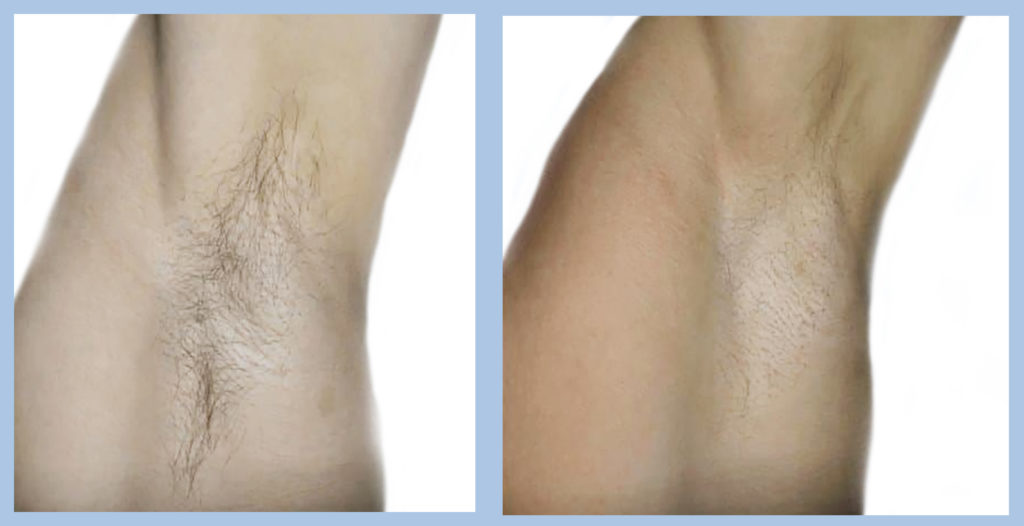Long-lasting solution for the treatment of unwanted hair. To be effective, laser hair removal must be performed by a class IV medical laser, which can only be used under medical supervision, doctor or his assistant trained in this technique, and under his strict responsibility.
We use some of the most efficient lasers that can treat all skin types.
- Light-Sheer diode laser (800 nm) which can process several phototypes up to type IV
- Nd-Yag laser (1064 nm), for black or mixed skin.
How does it work ?
The energy of the laser beam is absorbed by the hair pigment (melanin) and converted into heat at the root of it, and damages it (selective photo-thermolysis).
Hair removal by pulsed light or flash lamp, usually practiced in an institute or at an esthetician (without medical supervision), delivers light on the hair with a spectrum much wider than a laser, and therefore less selective and less effective ( more sessions, closer sessions, lower percentage of hair destruction).
In addition, the risk of burns and depigmentation is increased.
During sessions
- On hair shaved for two days or cut with scissors (no hair removal by pulling the hair in the three weeks before the session).
- Session every 4 to 6 weeks at the beginning, then every 2 to 3 months.
- 6 to 10 sessions depending on the people and the areas, making it possible to remove 80 to 85% of the hairs.
- An anesthetic cream can be applied one hour before the sessions on sensitive areas.
- Discreet redness after the session can persist for up to an hour.
- During the laser session, you must wear protective glasses or protective covers over the eyes.
Efficiency
The best results are obtained with dark hairs and fair skin. The blond and red hairs respond poorly to the treatment, the whites not at all.
Hair in the anagen (growth) phase is the most sensitive to the effect of laser treatment. Unfortunately, they only represent 20 to 70% of the hairs in a given area at a given time.

The bikini, armpit and half-leg areas show the best effectiveness. The hormone-sensitive areas (cheeks, sideburns, forehead, neck) are more resistant and require more sessions.
Laser treatment is more effective after 25 years, and in a woman with one or more pregnancies (maturity and hormonal stability). It is also more effective in a woman who has long practiced waxing or another method of traction.
Laser hair removal is the best solution for ingrown hairs, with clear improvement after 2 sessions.
Final results?
Usually after 4 to 6 sessions, at least 80% of the hair is destroyed (depending on the area and hormonal status).

Maintenance sessions (one to two sessions per year) will be necessary to treat hairs that have not been destroyed in previous sessions, or a few fine hairs which may reappear a few months later.
For the man
The same areas can be treated as in women, by adding the areas of the back, torso and ears.
Note that the hairs on the back or on the shoulders are sometimes more resistant.
Side effects
Possible, and without long-term consequences:
- Small crusts, blisters disappear in 3 to 10 days
- Brown or light spots disappear within a few months
- Anesthetic cream eczema, hives
- Paradoxical hypertrichosis is the appearance of fine hairs on or around the laser treated area. It most often occurs on the face in patients with hormonal instability. Fortunately, it is rare (less than 5%)
Much rarer:
- Change in sweating
- Permanent scars are exceptional